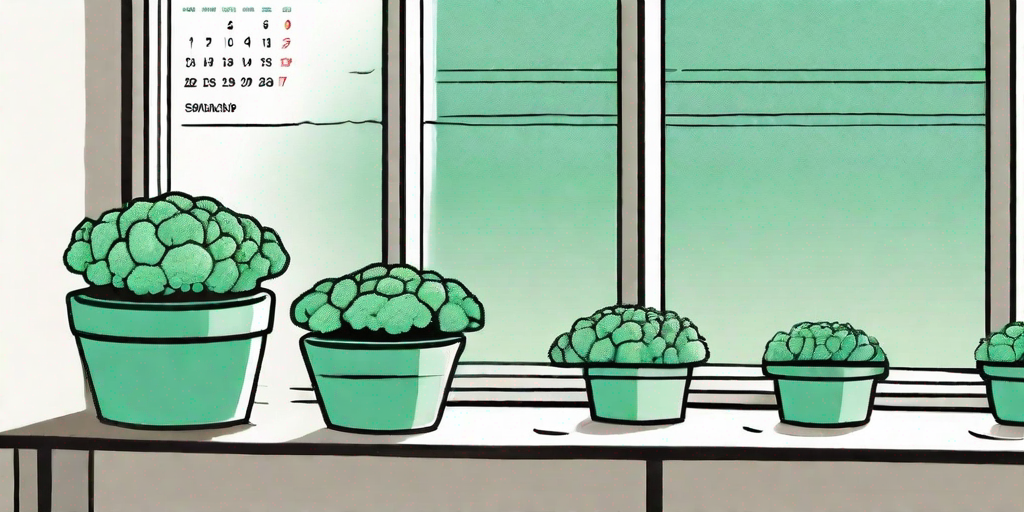
Cauliflower, the pale cousin of broccoli, is a delightful addition to any vegetable garden. It's not just a pretty face, either. This cruciferous vegetable is packed with vitamins and minerals, making it a healthy choice for your dinner plate. But, like any diva, cauliflower can be a bit finicky when it comes to growing conditions. Fear not, dear gardener, for we are here to guide you through the process of starting your cauliflower seeds indoors.
Understanding Cauliflower's Diva-Like Demands
Before we dive into the nitty-gritty of planting, it's important to understand what makes cauliflower such a prima donna. Unlike its more easy-going relatives, cauliflower requires a consistent cool temperature, plenty of moisture, and a lot of nutrients. It's the Mariah Carey of the vegetable world, if you will.
But don't let this deter you. With a little patience and care, you can coax your cauliflower seeds into producing beautiful, tasty heads. And trust us, the satisfaction of harvesting your own cauliflower is worth every bit of effort.
Why Start Cauliflower Seeds Indoors?
Starting seeds indoors gives you a head start on the growing season. It also allows you to control the conditions more closely, ensuring your cauliflower gets the TLC it needs. Plus, it's a great way to beat the winter blues. Who needs a tropical vacation when you can have a mini garden in your living room?
Indoor seed starting is particularly beneficial for cauliflower, as it allows you to ensure the consistent cool temperatures this vegetable craves. It also makes it easier to keep a close eye on moisture levels and nutrient availability.
Timing is Everything: When to Start Your Cauliflower Seeds Indoors
As with any performance, timing is crucial when it comes to starting your cauliflower seeds indoors. Start too early, and your seedlings may become leggy and weak. Start too late, and you may miss the optimal planting window.
The best time to start cauliflower seeds indoors is 4-7 weeks before the last spring frost. This gives the seedlings enough time to grow strong and hardy before they're transplanted outdoors. If you're unsure when your last spring frost typically occurs, there are plenty of online resources that can help you determine this based on your location.
How to Determine Your Last Spring Frost Date
Knowing your last spring frost date is crucial for determining when to start your seeds. This date represents the average date of the last frost in your area. While it's not a guarantee (Mother Nature is nothing if not unpredictable), it's a good guideline to follow.
There are several online tools that can help you determine your last spring frost date. Simply input your zip code, and voila! You'll have a rough estimate of when to expect your last frost. Just remember, it's always better to err on the side of caution when it comes to frost dates. If in doubt, wait an extra week before starting your seeds.
Getting Down to Business: How to Start Your Cauliflower Seeds Indoors
Now that we've covered the why and when, let's get to the how. Starting cauliflower seeds indoors is a relatively straightforward process, but there are a few key steps to ensure success.
First, you'll need to gather your supplies. This includes a seed starting mix, seed trays or pots, a watering can, and of course, your cauliflower seeds. You may also want to invest in a grow light, especially if you're starting your seeds in the middle of winter when natural light is scarce.
Step-by-Step Guide to Starting Cauliflower Seeds Indoors
- Fill your seed trays or pots with the seed starting mix. Make sure to fill them to the top, as the mix will settle once watered.
- Place 2-3 cauliflower seeds in each cell or pot. Cover the seeds with a thin layer of the seed starting mix.
- Water the seeds gently. The goal is to moisten the mix without washing away the seeds.
- Place the trays or pots in a warm, well-lit area. A south-facing window is ideal, but a grow light can also work.
- Keep the mix moist, but not waterlogged. It's a delicate balance, much like keeping a diva happy.
- Once the seedlings have two sets of true leaves, thin them out by removing the weaker ones. This gives the remaining seedling more space to grow.
- When the risk of frost has passed and the seedlings are strong, it's time to transplant them outdoors. But remember, like any diva, cauliflower doesn't like sudden changes. Harden off your seedlings by gradually introducing them to outdoor conditions over a week or so.
Frequently Asked Questions
Why are my cauliflower seedlings leggy?
Leggy seedlings are usually a sign of insufficient light. If your seedlings are stretching towards the light source and have long, thin stems, consider investing in a grow light or moving them to a sunnier location.
When should I fertilize my cauliflower seedlings?
Cauliflower is a heavy feeder, so it's a good idea to start fertilizing once the seedlings have two sets of true leaves. Use a balanced, water-soluble fertilizer and follow the package instructions.
Why isn't my cauliflower forming heads?
There are several reasons why your cauliflower may not be forming heads. It could be due to inconsistent temperatures, insufficient nutrients, or a lack of moisture. Remember, cauliflower is a diva and needs just the right conditions to perform.
Conclusion
Starting cauliflower seeds indoors may seem like a daunting task, but with a little patience and care, you can enjoy the fruits (or rather, vegetables) of your labor. Remember, timing is everything, and providing the right conditions is key to success. So go forth, dear gardener, and may your cauliflower be plentiful and your thumbs ever green.











